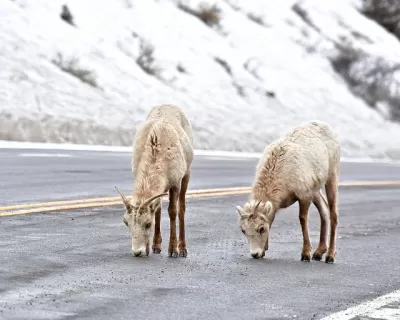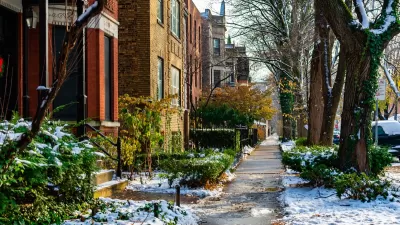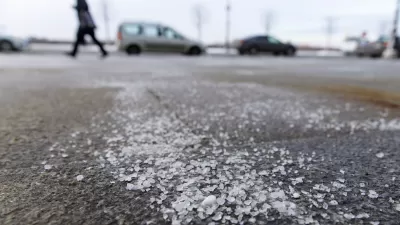A study from the USGS using five decades of data shows salinity and alkalinity are up in waterways across the United States.

According to a study published in Proceedings of the National Academy of Sciences, as reported by Don Hopey, “sodium chloride’s use to melt snow and ice also has a big, long-term and wide-ranging ecological downside.”
The unintended consequences of road salt are not breaking news (In Canada, it’s a regulated toxin), and this is the second study on the topic published in PNAS in the last year. But this is the first to "assess the extended changes in freshwater salinity and alkalinity across the continent."
The study also touches on the effects of fertilizer and runoff from mining operations, both of which are contribute significantly to the study’s findings in the agricultural areas of the Midwest.
In the cities, however, salt remains the primary culprit. Hopey writes:
“Waterway contamination from road salt is particularly bad in urban areas, and because it’s transported more easily than sodium, chloride is the greater concern, according to the USGS. An estimated 40 percent of the nation’s urban streams have chloride levels that endanger their aquatic life, largely because of road salt.”
Strategies to mitigate the effects of road salt include pre-salting and beet juice (but likely not sand) as well as technological advances Hopey details after speaking with an official from the Pennsylvania Department of Transportation.
But regardless of what happens in the future, planners will have to grapple with the fact that "many of the nation’s major rivers and river systems, including the Hudson, Potomac, Canadian, Chattahoochee and Mississippi" have endured "significant changes" to their ecology over the last five decades.
FULL STORY: Road salt has long-term effect on rivers, study finds

Planetizen Federal Action Tracker
A weekly monitor of how Trump’s orders and actions are impacting planners and planning in America.

Maui's Vacation Rental Debate Turns Ugly
Verbal attacks, misinformation campaigns and fistfights plague a high-stakes debate to convert thousands of vacation rentals into long-term housing.

Cuomo Is the Candidate of Both NIMBYs and Developers. What Gives?
In the New York City mayoral race, odd bedfellows align to preserve the housing status quo.

The Subversive Car-Free Guide to Trump's Great American Road Trip
Car-free ways to access Chicagoland’s best tourist attractions.

San Antonio and Austin are Fusing Into one Massive Megaregion
The region spanning the two central Texas cities is growing fast, posing challenges for local infrastructure and water supplies.

Charlottesville Temporarily Has No Zoning Code
A judge ordered the Virginia city to throw out its newly revised zoning code, leaving permitting for new development in legal limbo.
Urban Design for Planners 1: Software Tools
This six-course series explores essential urban design concepts using open source software and equips planners with the tools they need to participate fully in the urban design process.
Planning for Universal Design
Learn the tools for implementing Universal Design in planning regulations.
Heyer Gruel & Associates PA
JM Goldson LLC
Custer County Colorado
City of Camden Redevelopment Agency
City of Astoria
Transportation Research & Education Center (TREC) at Portland State University
Jefferson Parish Government
Camden Redevelopment Agency
City of Claremont




























